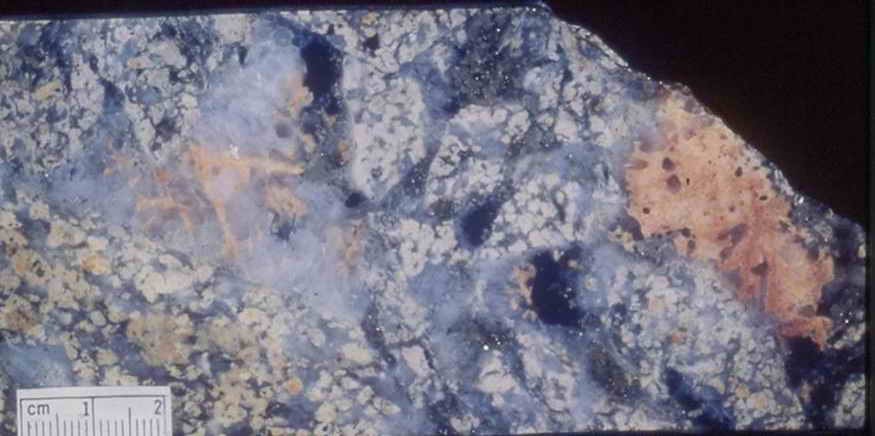
Terra Search safety
July 23, 2019
Exploration Soil Sampling using Ranger ATV
August 14, 2019FROM GRANITES TO MINERAL EXPLORATION
Dr Simon D Beams, 1998. Granites, Island Arcs, the Mantle, and Ore Deposits – A symposium held jointly between GEMOC and AGSO
Please click here to download the PDF of this publication.
The work of Bruce Chappell and other granite researchers has meant that granites are no longer regarded as the areas of pink that you map up to the edge of. As a consequence, there is now a greater understanding of the relationship between the lower crust and metallogenic provinces. Whether a particular granite has mineralisation associated with it, depends on factors such as concentration of metal in the source rocks, initial and final water content of the magma, level of intrusion in the crust, amount of melt component, degree of fractionation, oxidation state and reactivity of wall rocks. Many of these factors are predetermined by composition of source rocks and conditions of partial melting – two themes which permeate much of Chappell and coworkers’ research over the years.
The wealth of granite data now available allows the mineral explorationist to rank a regions prospectivity for granite hosted or granite sourced mineralisation. On. a regional scale the chemical and mineralogical features of individual granite plutons produce characteristic airborne magnetic, radiometric and thematic mapping (TM) signatures. Screening the background granitic features allows potentially mineralised structures and alteration systems to be targeted. Field, petrographic and chemical studies of granite on a local scale provide an intimate understanding of the crustal and mineralisation history of a prospect area. Careful mapping of individual granite plutons and their relations to multi-generation dykes, hydrothermal alteration, breccia zones, structural fabric and vein sets carl unravel timing relationships, an understanding of which is crucial in all phases of exploration. The methodology and working hypotheses developed by the granite researchers have important practical applications which can be utilized by lateral thinking explorationists. Some examples are:
GRANITES INHERIT THEIR CHARACTERISTICS FROM THEIR SOURCE REGION.
This can be applied more generally as a notion that genetic information is encapsulated within rocks. In an exploration context, careful observation of key rocks such as breccias, veins, alteration zones and regolith materials will often provide insights into a prospect’s geological history, timing of mineralisation, and clues about the presence of a blind ore deposit.
CHOICE OF APPROPRIATE SAMPLE MEDIA WITH ACCURATE AND REPEATABLE
GEOCHEMICAL ANALYSIS OPTIMISES INTERPRETATION OF RESULTS
Nowadays, it is universally accepted that precise chemical analysis, together with a large sample size to account for coarse grainsize, is required to delineate trends in the chemical variation of granites. This was not always the case, Bruce Chappell’s sampling and analytical procedures have become the yardstick by which other chemical studies are measured. There are many parallels in exploration geochemistry, particularly when applied to gold and pathfinder elements. Very low levels of detection (down to ppb or ppt level) and collecting of bulk samples to avoid grainsize (i.e. nugget) effects are now the norm and have led to discoveries of ore.
DON’T IGNORE THE OBVIOUS
Closed minds about the uniformity of large areas of granite often meant that obvious geological features went undiscovered until granite areas were mapped. In a similar fashion, many mineral discoveries have been made after a resourceful geologist defies conventional wisdom and investigates prominent features in areas regarded up to that point as unprospective.
DATA PROCESSING AND PRESENTATION SYSTEMS PLAY A CRUCIAL ROLE IN THE
PRESENTATION OF DATA
The bulk data generated by multielement analysis of granites quickly outgrew the data processing systems of the early 1970’s. Similarly, data management systems have had to keep up with the enormous volume of data generated in mineral exploration. Today’s exploration geologist at least has the advantage of off the shelf software and doesn’t have to emulate Bruce Chappell and develop whole geochemical analytical, data manipulation and data presentation systems virtually from scratch.
THE CHAPPELL LEGACY
The growth in quantity and quality of geological and geochemical data over the past thirty years has been
staggering. The geological community owes a great debt to research scientists such as Bruce Chappell who
have been pathfinders in the collection, presentation and interpretation of high quality geochemical data,
along the way contributing to the understanding of geological terrenes and their related mineral deposits.
Please click here to download the PDF of this publication.





